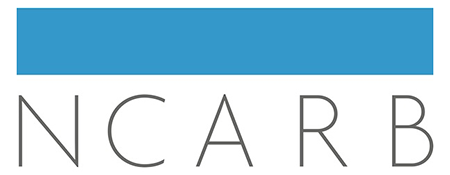Right to the City: Equity, Sustainability, and Single-Family Zoning, Part 2
In order to experience this course, a USD $25.00 fee must be paid. Sign in and then complete the payment form.
Growing US cities face escalating housing costs, residential and commercial displacement, homelessness, and the suburbanization of poverty. As increasing numbers of households are pushed out of the city by rising housing costs, they are burdened with long commutes and increased transportation costs while their carbon emissions escalate. These challenges are exacerbated by a deeply embedded policy—single-family zoning—that accounts for 75% or more of the land area allotted for housing in many fast-growing US cities. Part 2 of this two-part series outlines policies implemented at the city and state levels to make existing single-family neighborhoods more inclusive, equitable, walkable, and sustainable. It illustrates innovative case studies at the building scale to increase access to these neighborhoods for both renters and homeowners. In addition, it reviews efforts by architects and AIA chapters to address this issue despite the controversy that surrounds it. Each part of Right to the City can be taken as an individual course.
Want free access to this and other NCARB courses? The NCARB Continuum Education Program offers free HSW CE courses to licensure candidates and architects who hold a current NCARB Certificate, which can be accessed through their NCARB record. Renew your NCARB Certificate, or get NCARB Certified.
Upon completion of this course, the Learner should be able to:
- Describe policies enacted at the city level to make existing single-family neighborhoods more inclusive and sustainable.
- Describe policies enacted at the state level to make existing single-family neighborhoods more inclusive and sustainable.
- Identify policy strategies to encourage better neighborhood design and incentivize the creation of affordable housing units.
- Discuss innovative design and financing strategies at the building scale to provide more households access to home ownership and the wealth-building capacity it provides.
- Identify architects and AIA chapters using their unique training and skills to advocate for progressive change in their own communities.
Approximately 1 hour, 15 minutes. Delivered online, at your own pace.
Presented by Rick Mohler on behalf of National Council of Architectural Registration Boards. View the Privacy Policy .
Presenter Information

Name: Rick Mohler
Title: Contributing Author, NCARB Continuing Education Committee
Background:
Richard (Rick) Mohler, FAIA, NCARB, is a licensed architect and Associate Professor of Architecture in the College of Built Environments at the University of Washington (UW) in Seattle, where he teaches design studio and professional practice. He leverages synergies between his teaching, research, practice, and advocacy to promote just, policy-driven cities that are shaped by principled design, addressing all scales of urban experience while building connections between the academy, profession, government, and community. Rick has over thirty-five years of experience in professional practice with over twenty-five years as a principal of his own firm. He has been recognized with over a dozen local and regional AIA design awards and in national and international urban design and housing competitions, and his professional work has been published extensively. He was elevated to the AIA College of Fellows in 2021.
Rick won a 2021 ACSA/AIA Housing Design Education Award, and his students have been recognized twenty times in regional, national, and international student design competitions and awards programs. He won a 2020 R+D Award from Architect magazine for ADUniverse, an online application for homeowners to determine the physical and financial feasibility of building an accessory dwelling unit on their parcel. Rick is an effective advocate for housing affordability who writes and speaks frequently at AIA and ACSA national conferences and symposia and other venues. He is an Urban@UW Fellow, Affiliate Fellow of the UW Runstad Center for Real Estate Studies, former cochair of the AIA Seattle Public Policy Board, and cochair of the Seattle Planning Commission.
He received BA and Master of Architecture degrees from the University of Pennsylvania and lives with his family in a single-family home (with an accessory dwelling unit) of his own design in Seattle.
This course is registered with:
4 Industry Association(s)
Industry Association(s)

American Institute of Architects (AIA)
Course Number/ID: AEC1763-01:1
Approval ID: AEC1763-01:1
AIA/CES Learning units:
1.25
AIA approved course. This course qualifies for 1.25 LU/HSW Hour.
AEC Daily reports Learning Units on members' behalf.

Green Building Certification Inc. (GBCI)
Course Number/ID: AEC1763-01:1
Approval ID: 920031919
GBCI CE Hours:
1
GBCI approved for GBCI General CE. Course approval #920031919.
AEC Daily reports Learning Units on members' behalf.

Health, Safety, and Welfare (HSW)
Course Number/ID: AEC1763:1
Approval ID: AEC1763:1
Hours:
1.25
This course qualifies for HSW.

Registered Continuing Education Program (RCEP)
Course Number/ID: AEC1763:1
Approval ID: AEC1763:1
PDH:
1.25
AEC Daily is an RCEP-approved continuing education provider.
Credit earned on completion of this program will be reported to RCEP.
Take This Course Mobile!
Scan this code with your mobile device camera to take this page on-the-go!

https://redirect.aecdaily.com/s1003903/www.aecdaily.com/course/1005746

